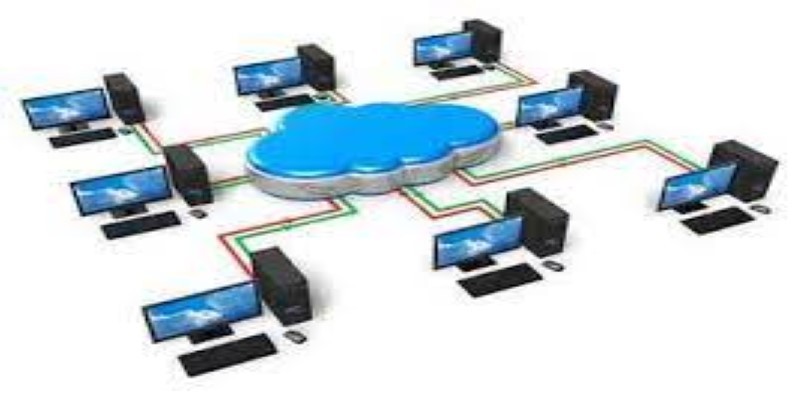
About Course
Computer networks are a growing trend. You can find them at your home, school, work, and most of the places you go daily.
Learn the basic concepts of computer networks, which hardware to use to set them up, and how to secure them.
- Become aware of networks surrounding you
When you start noticing networks around you, you will also understand a big part of the IT world. You will learn how the Internet works, how your Internet Service Provider (ISP) allows you to connect online, how do people share data without Internet access, and much more. Everything starts by becoming aware of computer networks.
- Learn how to set up a network
Whether you are taking this course to improve yourself, to get a better grade at school, or because of work, setting up a network is a skill that is very useful today. Yet many people do not know how to do it. You have an opportunity to learn it in few minutes.
- Learn how to protect yourself in a network, including the Internet
Unwanted sharing of passwords, pictures, documents, credit card numbers, and internet activity is not something anybody would want to share. But, with the expanded usage of computer networks, privacy is becoming an abstract term. This course helps you protect yourself when going online, and also protects your home/office network.
In this course you will learn network concepts, what are they and how do they work.
You will learn about network types, topologies, addresses, architectures, and communication modes.
In addition, you will learn about network hardware like modems, routers, and switches; and about transmission media like cables and electromagnetic waves.
The course also covers securing a network and securing yourself in a network.
It does not take a lot of time to take and view the course, but the knowledge you get will benefit your personal, and also your business life.
Who this course is for:
- The course is for everyone interested in learning about computer networks.
- Students that need help with network subjects.
- People who simply want to improve their knowledge about computer networks.
- Anyone who tried to learn about a computer network, but failed due to the lack of a perceivable image of it.
- People preparing for certification exams (such as CCNA).
Course Content
Computer Networks part 4
-
Introduction to Wireless Signal Propagation: Part 1 – Hamming Distance
11:12 -
Introduction to Wireless Signal Propagation: Part 2
00:00 -
Introduction to Wireless Signal Propagation: Part 3
00:00 -
Introduction to Wireless Signal Propagation: Part 4
00:00 -
Introduction to Wireless Signal Propagation: Part 5 : MIMO, OFDM
00:00 -
Introduction to Wireless Signal Propagation: Part 6 – OFDM
00:00 -
Introduction to Wireless Signal Propagation: Part 7 – Effect of Frequency
00:00 -
IEEE 802.11 Wireless LANs Revisited – Part 1
00:00 -
IEEE 802.11 Wireless LANs Revisited – Part 2: ISM Bands
00:00 -
IEEE 802.11 Wireless LANs Revisited – Part 3: Hidden Node Problem
00:00 -
IEEE 802.11 Wireless LANs Revisited – Part 4: DCF
00:00 -
IEEE 802.11 Wireless LANs Revisited – Part 5: DCF Example
00:00 -
IEEE 802.11 Wireless LANs Revisited- Part 6: IEEE 802.11 Architecture
00:00 -
IEEE 802.11 Wireless LANs Revisited- Part 7: Frame Format
00:00 -
IEEE 802.11 Wireless LANs Revisited- Part 8: Power Management
00:00 -
IEEE 802.11 Wireless LANs Revisited- Part 9: 802.11a/b/g/n/ac
00:00 -
IEEE 802.11 Wireless LANs Revisited- Part 10: PDU
00:00 -
IEEE 802.11 Wireless LANs Revisited- Part 11: 802.11 a & b
00:00 -
IEEE 802.11 Wireless LANs Revisited- Part 12- 802.11e (Enhanced QoS)
00:00 -
IEEE 802.11 Wireless LANs Revisited- Part 13- 802.11n
00:00 -
IEEE 802.11 Wireless LANs Revisited- Part 14- 802.11n (Cont.)
00:00 -
IEEE 802.11 Wireless LANs Revisited- Part 15- 802.11ac
00:00 -
60 GHz Millimeter Wave Multi-Gigabit Wireless Networks: Part 1
00:00 -
60 GHz Millimeter Wave Multi-Gigabit Wireless Networks: Part 2
00:00 -
60 GHz Millimeter Wave Multi-Gigabit Wireless Networks: Part 3 802.11ad
00:00 -
60 GHz Millimeter Wave Multi-Gigabit Wireless Networks: Part 4 802.11ad
00:00 -
60 GHz Millimeter Wave Multi-Gigabit Wireless Networks: Part 5 – WirelessHD
00:00 -
60 GHz Millimeter Wave Multi-Gigabit Wireless Networks: Part 6 – WirelessHD
00:00 -
Vehicular Wireless Networks: Part 1
00:00 -
Vehicular Wireless Networks: Part 2
00:00 -
Vehicular Wireless Networks: Part 3
00:00 -
Vehicular Wireless Networks: Part 4
00:00 -
Fundamentals of Internet of Things: Part 1
00:00 -
Fundamentals of Internet of Things: Part 2
00:00 -
Fundamentals of Internet of Things: Part 3
00:00 -
Fundamentals of Internet of Things: Part 4
00:00 -
Introduction to Bluetooth and Bluetooth Smart: Part 1
00:00 -
Introduction to Bluetooth and Bluetooth Smart: Part 2
00:00 -
Introduction to Bluetooth and Bluetooth Smart: Part 3
00:00 -
Introduction to Bluetooth and Bluetooth Smart: Part 4
00:00 -
Introduction to Bluetooth and Bluetooth Smart: Part 5
00:00 -
Introduction to Bluetooth and Bluetooth Smart: Part 6
00:00 -
Introduction to Bluetooth and Bluetooth Smart: Part 7
00:00
Student Ratings & Reviews

